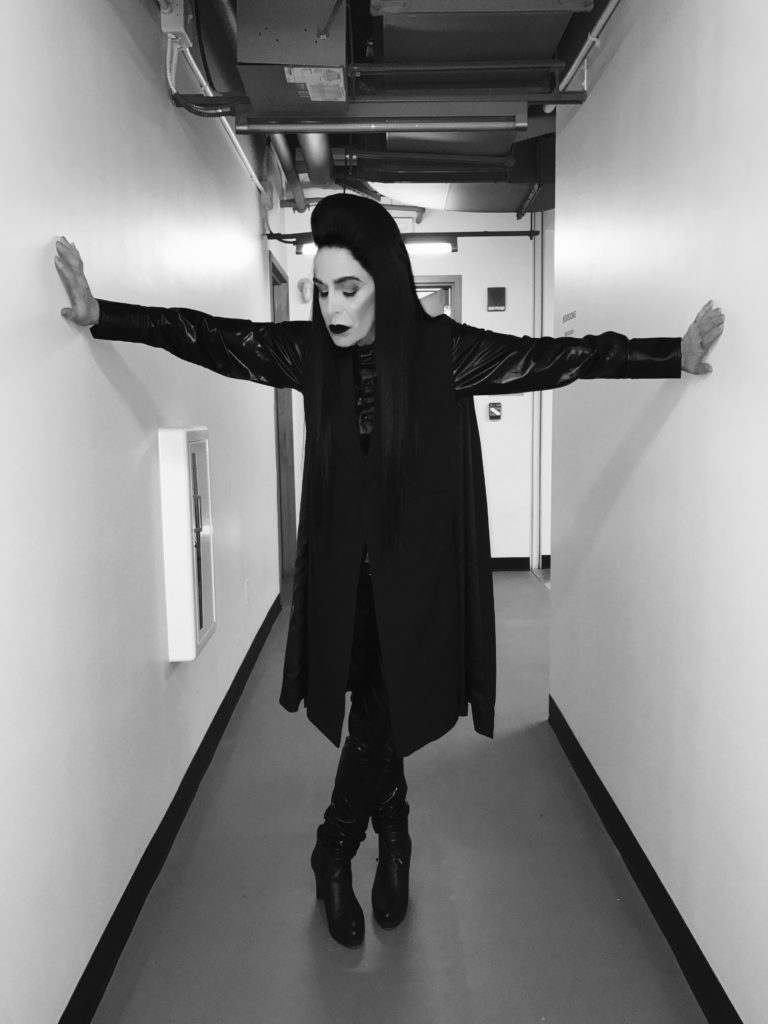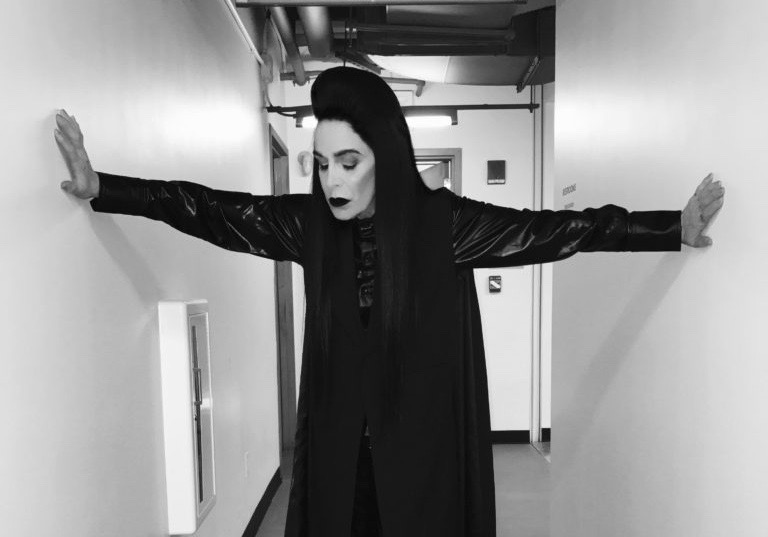[ad_1]

Galas at the premiere of Schrei 27.
LORENZO DIAZ
One recent Friday, at Performance Space New York’s premiere of the film installation Schrei 27—a collaboration between the legendary avant-garde vocalist Diamanda Galas and the Italian director Davide Pepe—I subjected myself to three consecutive viewings of the brilliant, uncompromising piece as it played on a loop. When I told Galas this during a phone interview the following week, she let out a hearty laugh. “Oh my god, oh my god, you poor thing,” she said. “That’s pretty hard.”
The 27-minute film, an exploration of medical torture that enlists seizure-quick strobe effects, jarring, ring-modulated vocals, and loud high-end-heavy noise passages, is probably not for the faint of heart. (Performance Space New York provided free ear plugs at the door.) It is, however, an almost timeless-feeling piece of cinema whose abrasiveness is not in vein. “The artist is the craftsman who creates compulsively and ritually to save his own life in a society that has condemned him to hell,” Galas told me. “That is why artists could have an inside track to people whose life consists much of the day of a torture that they cannot explain.”
Schrei 27 is the final manifestation of a piece that was originally conceived in 1994 as a work for radio and, in 1996, was staged as a quadraphonic performance at Performance Space New York (which at the time was known as Performance Space 122). Its loose abstracted plot follows the chemical, mental, and machine-driven torture of a person, played by Galas and Salvatore Bevilacqua, following the character’s capture for treason. One scene featuring a cackling Galas is particularly singed into my brain.
Galas, who has employed a multi-octave vocal range throughout a storied career moving in and out of classical, pop, and experimental music circles, said that Schrei 27 is on the extreme side of her body of work. She stated that the piece is sonically “much less balanced” than some of her records, focusing on at times brutal high-frequency sounds. The film manifestation builds on this, adding new levels of intensity, primarily in flickering black and white.
Galas decided she wanted to work with Pepe on this version of Schrei 27 after seeing his experimental short film Little Boy. “What I was most impressed with was his use of the sound of the camera in the audio track,” Galas said. “It gave it this surgical access, this physical dimension and a distance of coldness and preciseness that can be, for some people, frightening. I like it very much, and that is when I asked him to do Schrei 27. I realized that with his approach then we could do a visual analog to the sound.”
Most films, Galas noted, are “images first and then they hire a composer and sound-effects people.” Schrei 27, on the other hand, is reverse-engineered. “It’s a vocal, electronic composition which then is set to a visual component,” she said. “So this is the complete opposite of film as we know it.” The piece has seen different incarnations since its initial showing in 2012 at the Museum of Contemporary Art in Chicago. The New York premiere features additional sound design and mixing from Dave Hunt. “I would not have done it as a premiere here had we not done all that additional work,” Galas said. “I would not have done it because that would not have been accurate—this was the final version.”
Schrei 27 is intense in a way that is often only hinted at in more conventional cinema. “People could see internal organs, people could see what the process of torture is in a physiological sense,” Galas said of her film. “And, you know, we have a lot of these gory films with torture and we have a lot of psychological films, but I wanted it to be more physiological and as far removed from the bloody gore—blah, blah, blah—because it’s not really, in general, effective at this juncture, it’s used for entertainment purposes.”
A headstrong vision has been one of the through lines in Galas’s distinguished career, which has seen her collaborate with everyone from Led Zeppelin’s John Paul Jones to the San Diego Symphony to the Soviet dissident artist Vladislav Shabalin. She recounted a story about a performance in Prague in the wake of her collaboration with Jones, at which the audience was expecting something along the lines their work together. “Instead, I showed up, performed in the darkness, Schrei 27 without any low frequencies, nothing,” Galas said. “And these guys freaked out. These bikers. They freaked out, and so did the director who sees himself as very avant-garde but really was not.”
After that performance, Galas told me, she noticed the other performers and organizers were keeping their distance. “This is what you were begging for, and now that you got it, you are running away in horror,” she said. Perhaps portentously, she struck up a friendship with some of the filmmakers in attendance. “And then the next day, the reviews came out, and they were really great reviews,” she said. “And then the director decided to hang out with me again. By then it was too fucking late.”
[ad_2]
Source link

